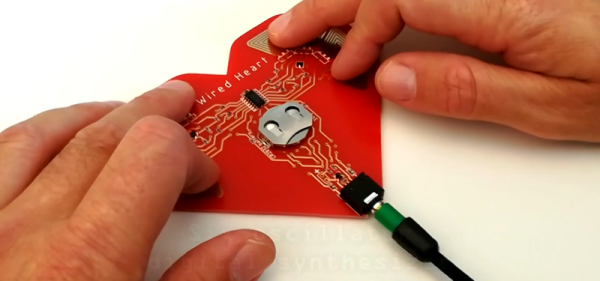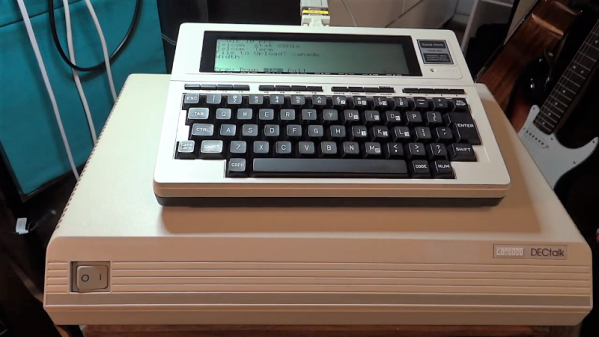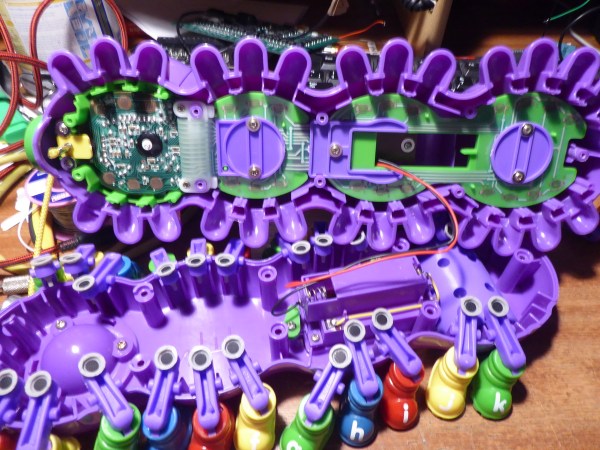The word “tremolo” has a wide variety of meanings in the musical lexicon. A tremolo effect, in the guitar community at least, refers to a periodic variation in amplitude. This is often achieved with solid state electronics, but also recalls the sounds created by Hammond organs of years past with their rotating Leslie speakers. [HackaweekTV] decided to do things the old fashioned way, building a mechanical tremolo effect of his own (Youtube link, embedded below).
Electronically, the signal is simply passed through a linear audio potentiometer. The effect is generated by rapidly cycling this potentiometer up and down. The motion is achieved through a geared motor salvaged from a Roomba, which turns a cam. A sprung follower sits on top of the cam, and is attached to the potentiometer.
There were some challenges in development. Rigidity of the frame was an issue, and the follower had issues with snagging on the cam. However, with some careful iteration they were able to get everything up and running. The final project sounds great, and with the amplifier turned up, there’s no need to worry about the sound of the moving parts.
Naturally, you can always build a tremolo with a 555 instead. Video after the break.
Continue reading “Mechanical Tremolo Does Things The Old-School Way”









 The image above provides a great look inside the beastie. [Jason Hotchkiss] mentions he’s impressed by the build quality, and we have to agree. Plus, look at all of those inputs — this is begging to leave toyland and join the band. With an intuitive sense that can only be gained through lots of circuit-bending experience, he guessed that the single through-hole resistor on the PCB was used to dial in the clock speed. That made it easy to throw in a trimpot for pitch-bending and he moved on to figure out individual note control.
The image above provides a great look inside the beastie. [Jason Hotchkiss] mentions he’s impressed by the build quality, and we have to agree. Plus, look at all of those inputs — this is begging to leave toyland and join the band. With an intuitive sense that can only be gained through lots of circuit-bending experience, he guessed that the single through-hole resistor on the PCB was used to dial in the clock speed. That made it easy to throw in a trimpot for pitch-bending and he moved on to figure out individual note control.










